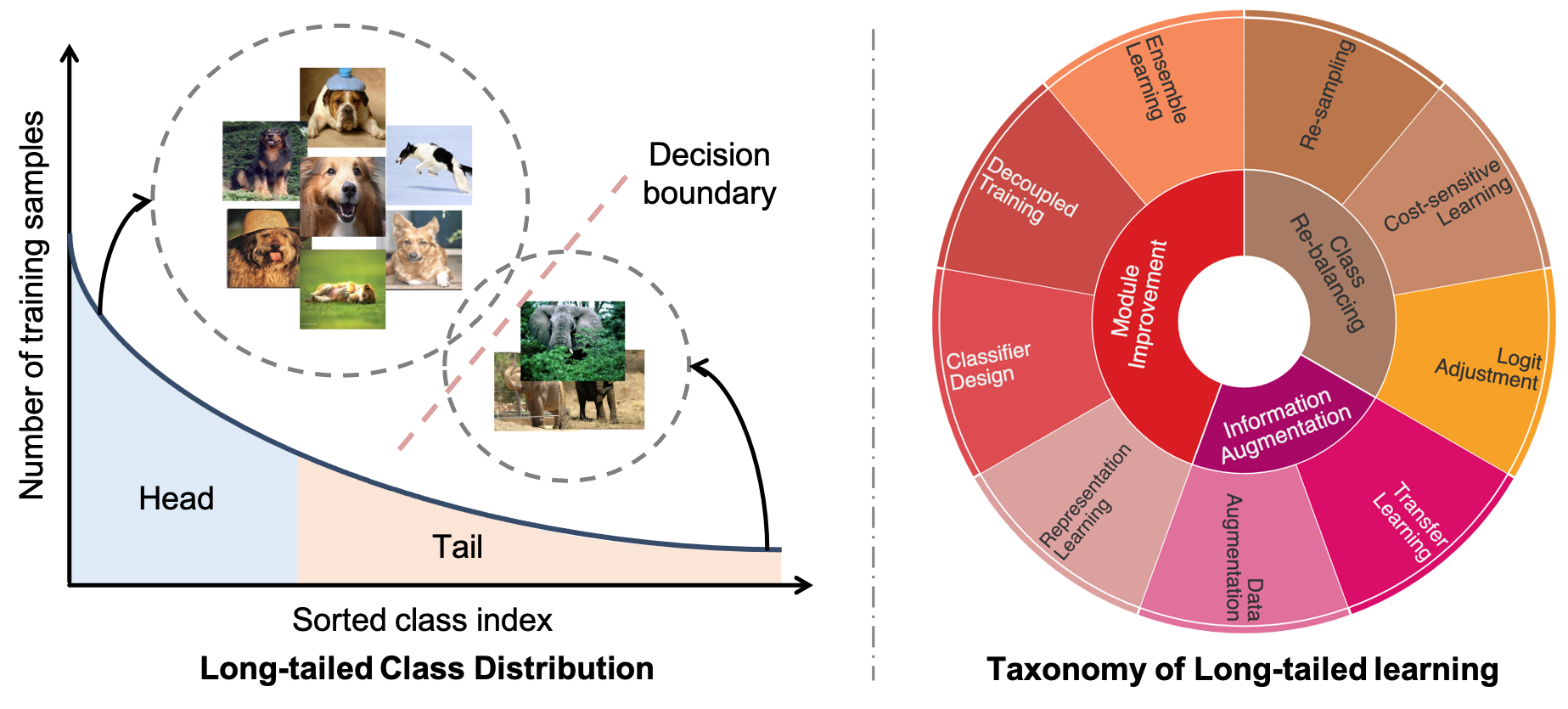Deep Long-Tailed Learning: A Survey
Deep long-tailed learning, one of the most challenging problems in visual recognition, aims to train well-performing deep models from a large number of images that follow a long-tailed class distribution. In the last decade, deep learning has emerged as a powerful recognition model for learning high-quality image representations and has led to remarkable breakthroughs in generic visual recognition. However, long-tailed class imbalance, a common problem in practical visual recognition tasks, often limits the practicality of deep network based recognition models in real-world applications, since they can be easily biased towards dominant classes and perform poorly on tail classes. To address this problem, a large number of studies have been conducted in recent years, making promising progress in the field of deep long-tailed learning. Considering the rapid evolution of this field, this paper aims to provide a comprehensive survey on recent advances in deep long-tailed learning. To be specific, we group existing deep long-tailed learning studies into three main categories (i.e., class re-balancing, information augmentation and module improvement), and review these methods following this taxonomy in detail. Afterward, we empirically analyze several state-of-the-art methods by evaluating to what extent they address the issue of class imbalance via a newly proposed evaluation metric, i.e., relative accuracy. We conclude the survey by highlighting important applications of deep long-tailed learning and identifying several promising directions for future research.
PDF Abstract

 ImageNet
ImageNet
 MS COCO
MS COCO
 CIFAR-100
CIFAR-100
 Places205
Places205
 iNaturalist
iNaturalist
 LVIS
LVIS
 VideoLT
VideoLT